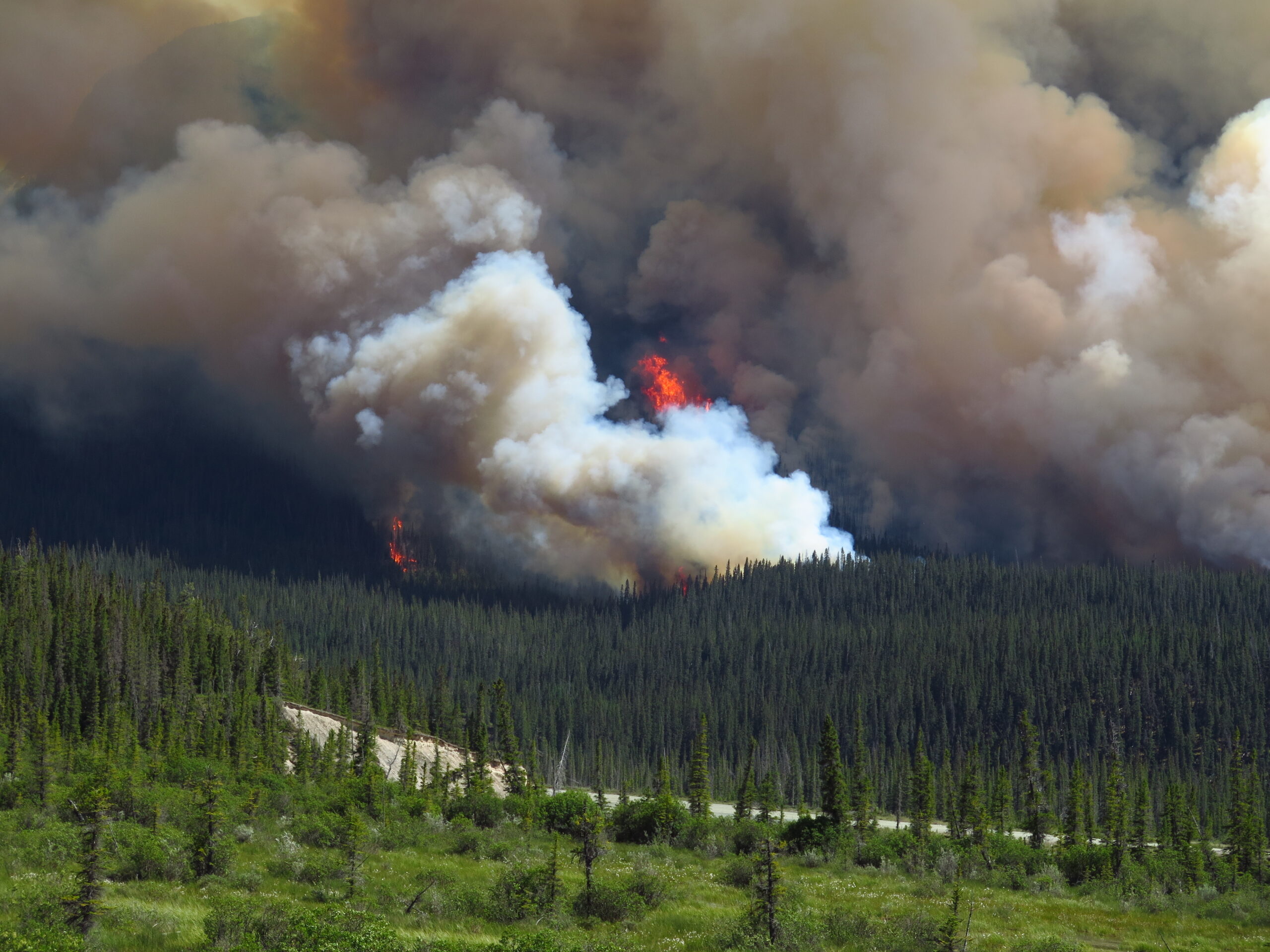
CUPE issues guidance on wildfire smoke hazards, affirms workers’ right to refuse unsafe work
August 25, 2023
By
OHS Canada

The Spreading Creek Wildfire close to the Saskatchewan River Crossing at Banff National Park in this 2014 file photo. Photo: Adobe Stock
The Canadian Union of Public Employees (CUPE) has issued guidance around the hazards of wildfire smoke, reminding workers that they have the right to refuse unsafe work — and that includes work made hazardous by wildfire smoke.
“CUPE members are experiencing wildfires that are increasing in number and severity,” it said. “These fires and the smoke they create harm everyone’s physical and mental health, especially equity-seeking groups like Indigenous populations and people with disabilities.”
It said employers have a duty to take all reasonable precautions to protect workers from poor air quality, regardless of the location or distance of the pollutants. Smoke from wildfires can have harmful chemicals and include heavy metals and hydrocarbons, it said.
Tips for employers
It offered the following advice to employers to address poor air quality:
- Identify workers who are more likely to be exposed.
- Inform workers how the employer will monitor poor air quality and advise workers of the dangers (see the AQHI Table below).
- Explain the dangers of smoke exposure and the symptoms to watch out for.
- Provide guidance on what to do if a worker shows signs of smoke inhalation.
- Establish protocols to signal an emergency and get immediate help.
- Provide training on administrative controls and personal protective equipment, including how and when to use and maintain the equipment.
- Regularly check in with workers.
Indoor air quality
- Balance ventilation systems in buildings and vehicles to limit outdoor intake and ensure proper exhaust, with help from a qualified HVAC professional.
- Use high efficiency particulate air (HEPA) filters. Replace clogged or dirty filters.
- Windows and doors should be closed.
- Improve indoor air quality with portable air purifiers.
Outdoor air quality
- Determine if outdoor activities can be moved indoors.
- Determine if outdoor activities can be suspended until the air quality improves.
- If work needs to be done outside, try to postpone or halt strenuous or heavy activities.
- Choose activities that are unlikely to increase breathing or heart rate.
- Take frequent breaks, preferably indoors.
For PPE, it noted that the Canadian Standards Association (CSA) has a respirator selection tool to help workers. It can be accessed at https://www.csagroup.org/store/standards-support-tools/occupational-health-and-safety/respirator-selection-tool/
It also encouraged monitoring of the Air Quality Health Index, noting there are no specific safety thresholds for working in wildfire smoke.
“Although employers may claim that they have no control over wildfires, they have a duty to ensure the safety of CUPE members at work,” it said. “When it comes to eliminating hazards at work, including wildfire smoke, we must continue to hold employers to account and exercise our right to work that is healthy and safe.”
See the full article from CUPE at https://cupe.ca/wildfire-smoke